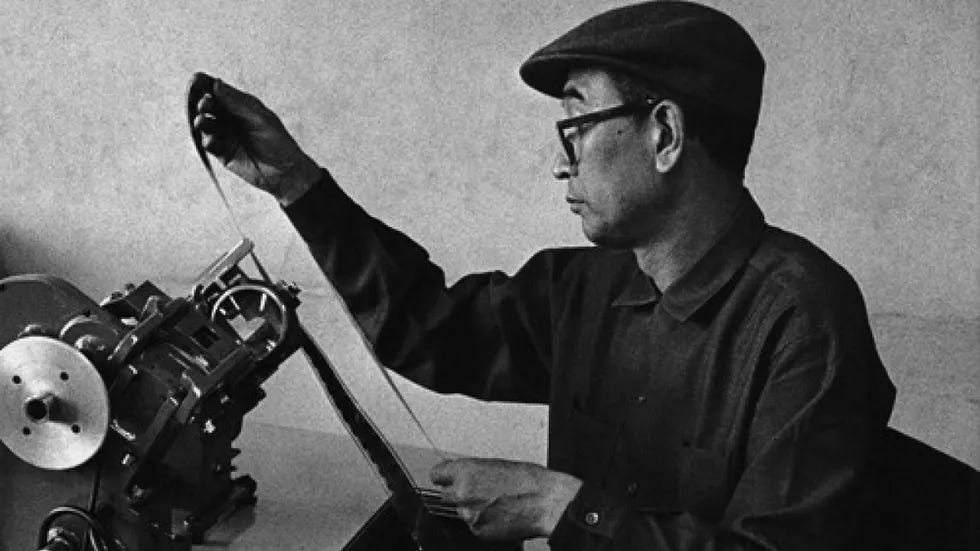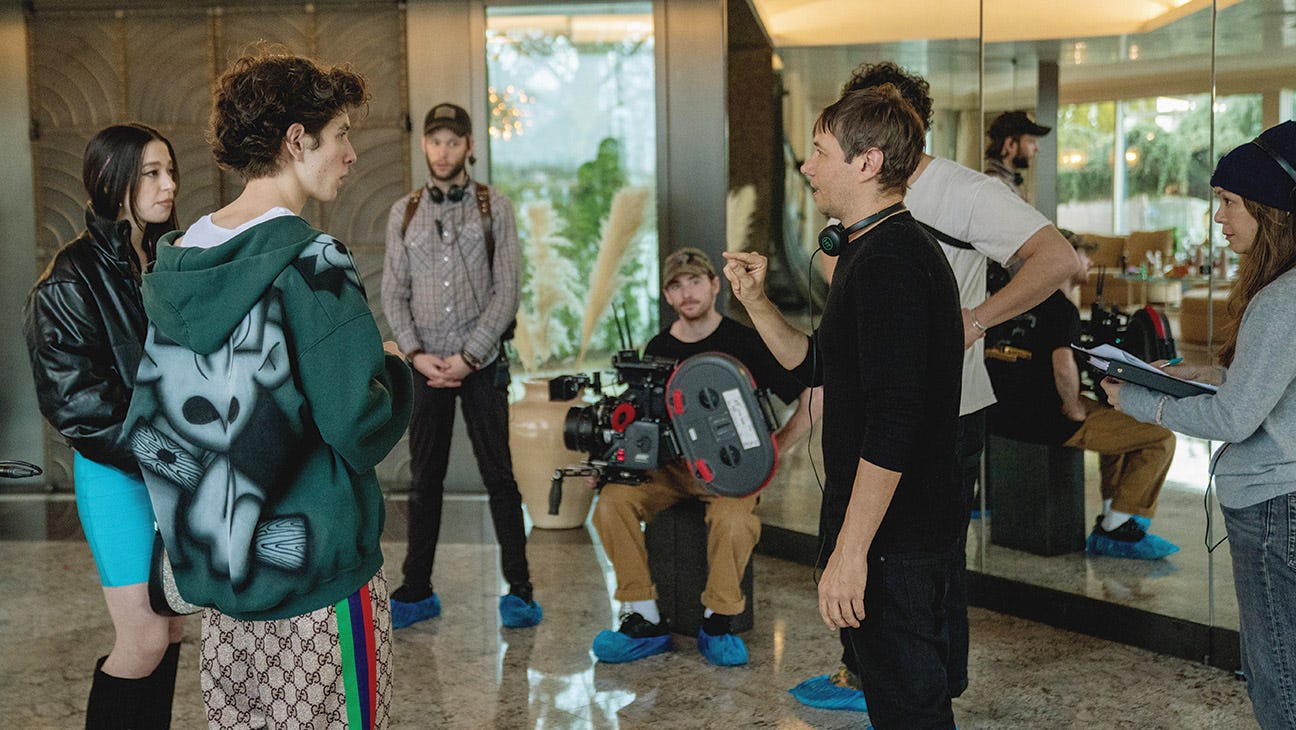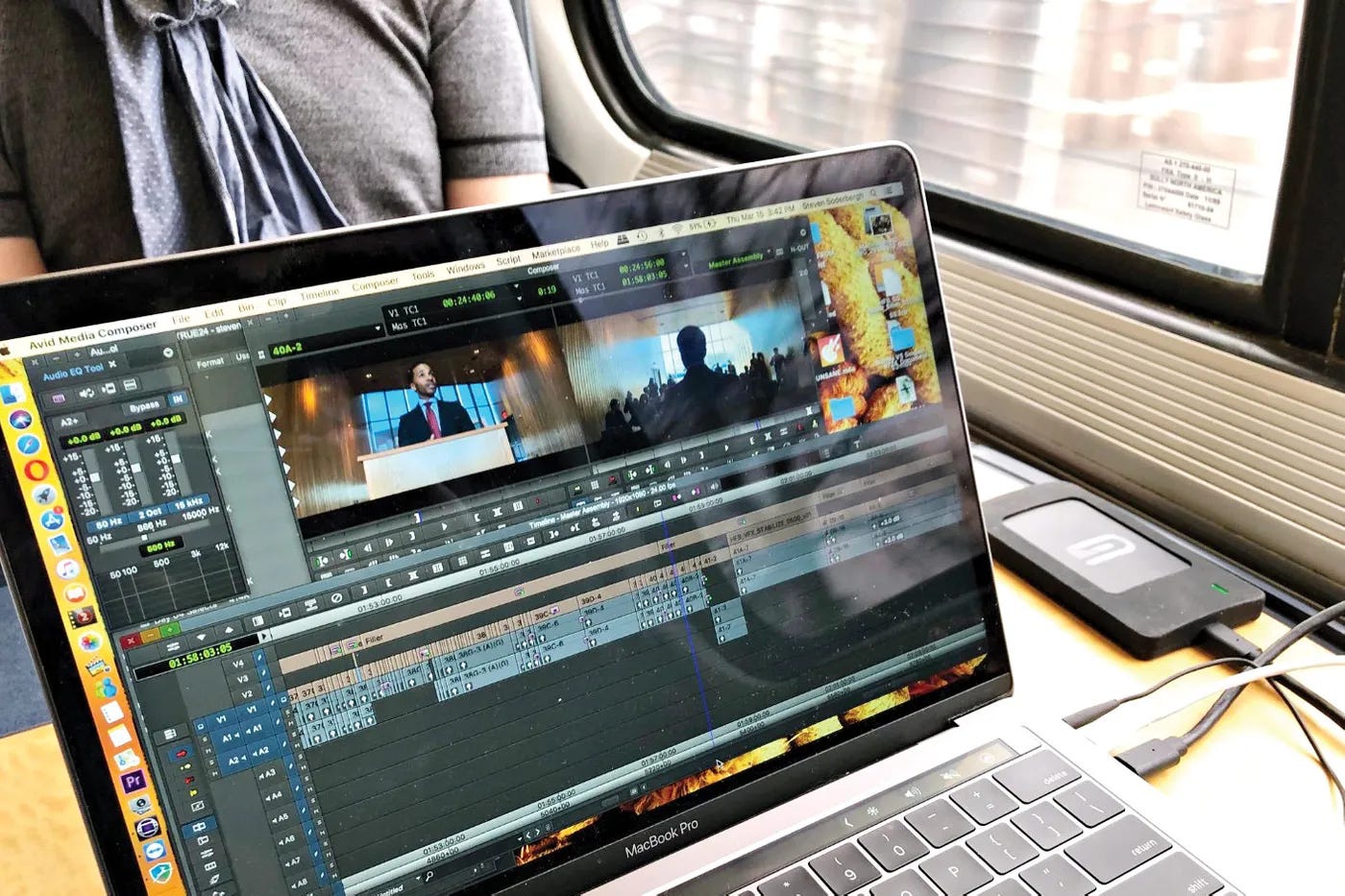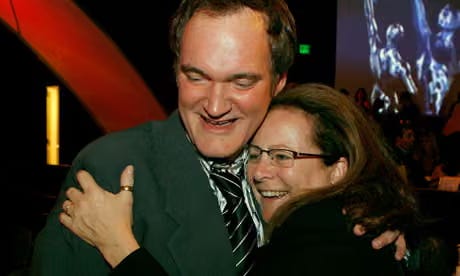Should directors edit?
The case for (and against) keeping the scissors in the director’s hands.
Hi everyone —
If you’re new to this Substack, welcome! This is Eddie AI’s twice-a-week newsletter where on Thursdays we highlight stories from the film and production industries and celebrate the people who pushed (and are pushing) it forward and at the beginning of the week we share the latest news in video, distribution, and video tech.
Thanks for reading and enjoy today’s post.
—Shamir
The advice is usually the same: do not cut your own film.
You’re too close to it. You’ll get lost in the memories of how hard that shot was to pull off, or how much that location cost.
An editor, the logic goes, shows up with no baggage and watches like the first audience. The editor becomes the objective compass, keeping the director from drowning in their own footage.
But is that really true?
Today, as tools have migrated from booths to bedrooms, the answer has become a lot more nuanced.
There’s a saying that a movie gets written three times: first on the page, then on set, and finally in the edit. Most indie directors are already writers, which makes the last step feel like the biggest question mark.
If you’ve spent years on the script, bled through fundraising, and survived the chaos of the shoot, why would you then just hand over your baby to someone else to raise?
Here’s why you shouldn’t..
Budget Cuts…
Money.
On a low-budget feature, keeping an editor on standby for six months just isn’t feasible. Even an emerging, non-union editor at ~$2,500 a week pushes you toward $60,000, and a union editor can easily run $120,000+.
For most indies, that’s the entire post budget (and then some) which is why directors so often end up cutting the film themselves.
Or…
You pay an editor to literally edit nonstop for a few weeks.
Damien Chazelle did this on Whiplash: editor Tom Cross had to cut both the short and the feature under tight deadlines to make Sundance, shaping the film’s breakneck pace in weeks.
It worked for Chazelle but it’s the exception, not the rule.
Final draft to Final Cut
Another perk of being your own editor is learning to shoot for the edit.
You stop treating production and post as separate phases and start folding them into one continuous craft.
You know exactly what coverage you’ll need and, just as importantly, what you can skip. Roger Deakins, legendary DP who’s shot a dozen Coen Brothers films, put it bluntly: “On their movies I shoot much less raw footage than I do with other people.”
That loop is addictive. Editing sharpens how you shoot, and shooting sharpens how you edit.
Instead of “finding” the movie later, you’re building it from the first take.
The Director’s Cut… Literally
Let’s dive into the directors who rarely let someone else raise their baby in the edit bay.
Akira Kurosawa (Seven Samurai, Rashomon)
Kurosawa cut nearly all of his own films, including, Throne of Blood (1957), The Bad Sleep Well (1960), Yojimbo (1961), Ran (1985). He described editing as “the most enjoyable part of filmmaking” and believed that “films are made in the editing room.”
His practice of editing while shooting resulted in a very short post-production period. For example, Yojimbo’s Japanese premiere occurred just four days after filming concluded.
Steven Soderbergh (Ocean’s series, Traffic, Unsane)
Often shooting as “Peter Andrews” and editing as “Mary Ann Bernard,” he collapses walls between departments to maintain a single sensibility. He edits while shooting, cutting at night, and delivers assemblies within days.
The result is lean, clipped with relentlessly forward momentum.
Soderbergh’s real strength as his own editor is speed. Total control lets him experiment in real time, which is why no two Soderbergh films look alike. He’s almost anti-style; there are no obvious markers because each film reinvents itself in the cut.
I mean, we’re talking about a guy who directed all of these films:
Traffic (2000) – sprawling, drug war drama.
Erin Brockovich (2000) – inspirational legal drama that won Julia Roberts an Oscar.
Ocean’s Eleven (2001) – glossy Vegas heist with Clooney & Pitt.
Solaris (2002) – meditative sci-fi remake of Tarkovsky.
Magic Mike (2012) – male stripper drama that became a cultural phenomenon.
Unsane (2018) – psychological thriller shot entirely on an iPhone.
Ethan & Joel Coen (Fargo, Burn After Reading, No Country for Old Men)
The Coens cut under the pseudonym Roderick Jaynes, and their edits feel like they’re written into the DNA of the script. The rhythm of their dialogue: the pauses, the clipped beats, the sudden lurches into violence works because the same brains that wrote it are cutting it.
Their editing has a sly, deadpan timing that another hand could easily blunt. Critics sometimes say their films feel too mannered or too tightly wound.
But that precision is the voice.
Ruben Östlund (The Square, Triangle of Sadness)
Builds social satire by weaponizing duration. Long, static, wide shots refuse traditional coverage. The edit holds you in discomfort until scenes fracture under pressure. He polishes sequences to near-final before assembling, later working with editor Jacob Schulsinger to tune macro-rhythm but the micro-rhythm is unmistakably his.
“Too long” “Overindulgent” “Should’ve been tighter” are common critiques.
But Ostlund films are exactly how they are because the edits are his. Unapologetically his. Overindulgent, yes.
That’s the price of admission when you’re in an Ostlund film.
Kristoffer Borgli (Sick of Myself, Dream Scenario)
Relies on the solitude of writing and editing to balance surrealism with deadpan realism. Dreams and reality are cut with the same observational texture so the audience destabilizes alongside the characters.
That tonal knife-edge lives in editing decisions about what to reveal and when.
Sean Baker (Anora, Tangerine, The Florida Project)
Often working solo on Final Cut Pro. His edits have a scrappy immediacy. Handheld shots stitched with a rhythm that feels lived-in, not polished within an inch of its life. Anora, which won the Palme d’Or and Oscar, is a prime example: the pace swerves between chaotic nightlife energy and quiet, observational beats, and that elasticity is baked into the edit.
Want to hear something crazy?
Baker cuts straight through from start to finish. No rough assemblies, just the fine cut.
The only eyes on its early versions are one or two trusted collaborators, like his spouse and producer Samantha Quan. He can get away with that because he’s indie, but the tradeoff is wild: the cut you see in his edit suite is usually the same one that plays in theaters.
The Comedic Cadence
Funny is hard to outsource.
It’s no coincidence that many director-editors like the Coens, Östlund, Borgli specialize in comedy and satire. Comedy lives in timing and that rhythm is hard to outsource.
For a director with a distinct comedic sensibility, handing over the edit can feel like handing over the punchline.
Counter-Argument: The Alchemy of Collaboration
Despite the magic of a creative singularity, the strongest case against self-editing is what you lose without collaboration.
A great editor can be a second brain. Two minds colliding can create something neither could make alone. Some of the greatest cuts in cinema exist because a director trusted an editor to push back, refine, and reimagine.
Here are few:
Scorsese & Schoonmaker The gold standard of symbiosis. Scorsese shoots like an editor, but Schoonmaker’s “cold eye” finds humanity and rhythm in the avalanche of footage. Their dialogue assembling, versioning, calibrating pace yielded the kinetic poetry of Raging Bull and the paranoid rush of Goodfellas.
Tarantino & Sally Menke forged a distinct cadence elastic dialogue tension punctured by sharp, violent cuts. She checked Quentin’s indulgences and tightened pacing. Many argue his post-Menke films feel looser; that absence is a testament to what a trusted editor contributes.
Coppola & Walter Murch The Conversation, The Godfather Part II, The Godfather, Apocalypse Now. All shaped by Murch’s hand in the edit and in sound. In In the Blink of an Eye, his “Rule of Six” put emotion above everything else, a philosophy that gave Coppola’s most ambitious films their pulse.
So… Should Directors Edit?
Yes. But with caveats.
The Auteur Case: If your voice lives primarily in timing, duration, and juxtaposition and you can tolerate the solitude, it’s hard to to just pass that on to a third party. . Soderbergh, Coen brothers. Östlund, and Borgli show how the cut can be the signature.
The Indie Case: When budgets won’t carry an editor for months, if you know how to edit or you can devote the time to learn, then self-editing is often the only way the film gets finished.
The Collaboration Case: If your project thrives on dialectic, dense performance nuance, tonal tightrope, or mountains of coverage….a dedicated editor is an amplifier, The Schoonmaker, Menke, and Murch examples prove that “fresh eyes” can be the difference between good and great.
We want to hear from you. Do you think directors should edit?




